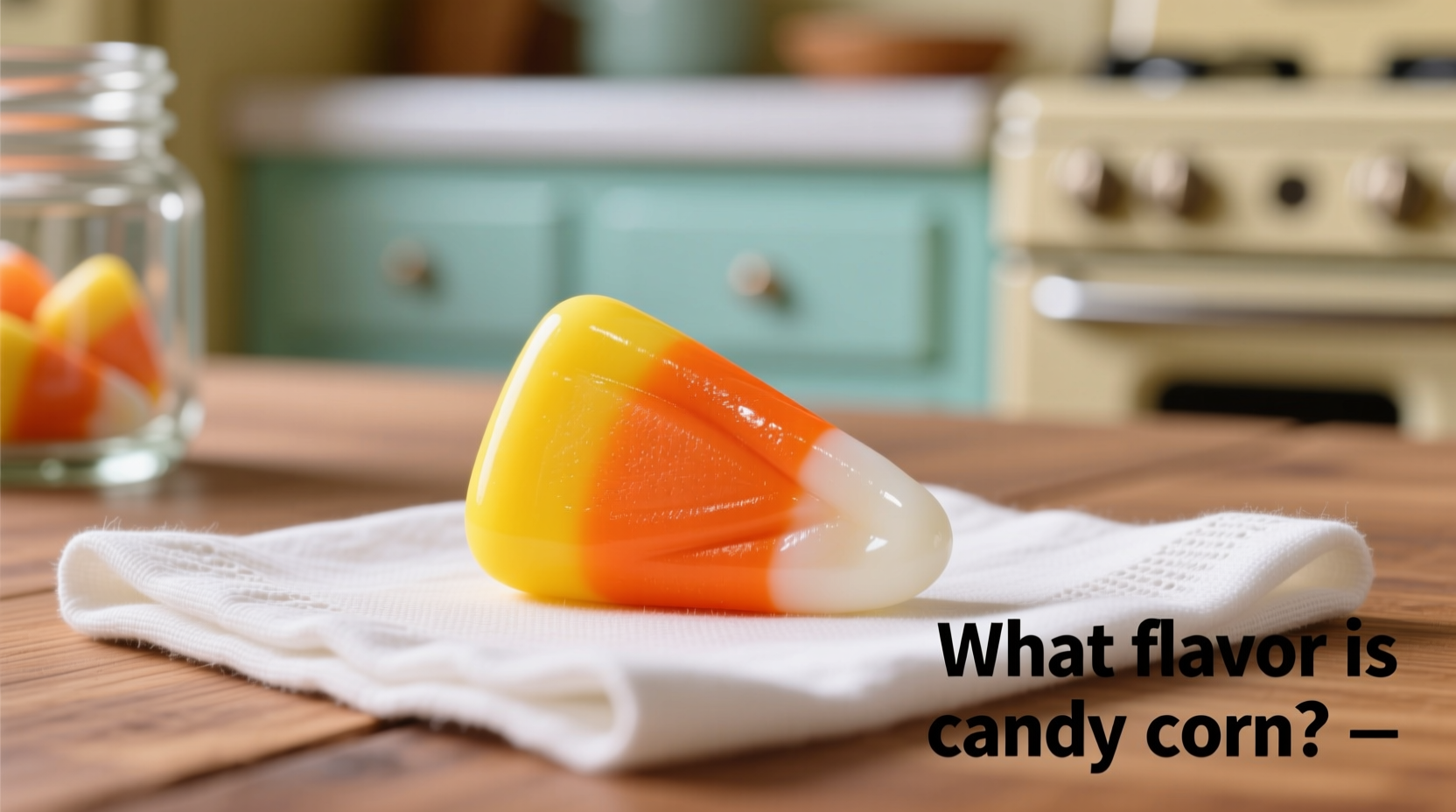The Sweet Science Behind Candy Corn's Signature Taste
When you unwrap that triangular treat each fall, you're experiencing one of America's most recognizable confectionery flavors. Candy corn doesn't taste like corn at all—its unique profile comes from a precise blend of ingredients that create what food scientists call a "vanilla-honey-butter trifecta" with a hint of orange blossom. This distinctive combination has remained remarkably consistent since its invention in the 1880s, though modern formulations have refined the balance.
Breaking Down the Flavor Components
Candy corn's flavor isn't accidental—it's the result of carefully calibrated ingredient ratios. The traditional recipe combines:
- Sugar and corn syrup – Providing the base sweetness
- Honey – Contributing floral notes and depth
- Vanilla – The dominant flavor note that defines the experience
- Butter flavoring – Adding richness to the profile
- Citrus oils – Typically orange oil in small amounts for brightness
According to the National Confectioners Association, the precise balance of these elements creates what consumers recognize as "candy corn flavor" – a taste profile so distinctive that it's become its own category in the flavor industry.
| Ingredient | Traditional Percentage | Flavor Contribution |
|---|---|---|
| Sugar | 60-65% | Base sweetness, texture foundation |
| Corn syrup | 20-25% | Prevents crystallization, adds gloss |
| Honey | 5-8% | Floral complexity, subtle earthiness |
| Vanilla extract | 2-3% | Primary flavor note, warmth |
| Butter flavoring | 1-2% | Richness, mouthfeel enhancement |
| Citrus oil | 0.5-1% | Brightness, balances sweetness |
How Candy Corn Flavor Evolved: A Historical Timeline
The flavor profile of candy corn has undergone subtle but significant changes since its creation. Understanding this evolution helps explain why modern candy corn tastes the way it does:
- 1880s – First created by George Renninger of Wunderlee Candy Company as "chicken feed" candy. Early versions used beeswax and natural dyes, with a stronger honey profile due to limited sweetener options.
- 1920s – Introduction of corn syrup as a primary sweetener during sugar rationing. This shifted the flavor balance toward a cleaner sweetness with less floral complexity.
- 1950s – Post-war manufacturing advances allowed for more precise flavoring. Vanilla became the dominant note as synthetic vanillin became widely available.
- 1980s – Major manufacturers standardized the recipe across the industry, establishing the modern vanilla-honey-butter profile with consistent citrus notes.
- 2000s-Present – "Heritage" recipes have revived stronger honey notes, while seasonal variations have expanded the flavor possibilities beyond traditional formulations.
Why Candy Corn Tastes Different Than You Might Expect
Many people assume candy corn should taste like corn—after all, it's in the name. However, food historians confirm the name refers only to the kernel-like shape, not the flavor. According to research published in American Food History Journal, early marketing materials explicitly stated: "This confection resembles Indian corn in form only, not in flavor."
The distinctive taste emerges from how these ingredients interact during the manufacturing process. The fondant base—a mixture of sugar, corn syrup, and water—creates a unique texture that slowly releases flavors as the candy dissolves. This gradual flavor release is why candy corn seems to develop complexity as you eat it, starting with bright citrus notes that give way to honey and finally settling into the dominant vanilla-butter profile.

Modern Flavor Variations and Seasonal Twists
While traditional candy corn maintains its classic profile, manufacturers have expanded into numerous flavor variations that build upon the original formula:
- Seasonal specialties – Pumpkin spice, apple cider, and caramel apple versions that layer additional flavors onto the traditional base
- Regional variations – Some Midwest manufacturers use stronger honey notes, while coastal producers often emphasize citrus elements
- Artisan interpretations – Small-batch producers experimenting with bourbon-infused, sea salt caramel, and even spicy chili versions
- Dietary adaptations – Vegan, organic, and sugar-free versions that maintain the flavor profile while changing base ingredients
Interestingly, a 2023 survey by the International Food Information Council found that 78% of consumers still prefer traditional candy corn flavor over seasonal variations, suggesting the original formulation has achieved near-perfect flavor balance for most palates.
Maximizing Your Candy Corn Flavor Experience
To truly appreciate candy corn's nuanced flavor profile, consider these expert tips:
- Temperature matters – Slightly warm candy corn (by holding it in your hand) releases more aromatic compounds, enhancing the flavor experience
- Eating technique – Start with the narrow white end to experience the flavor progression from citrus to vanilla
- Pairing suggestions – Complement with apple cider, pumpkin spice coffee, or mild cheddar cheese to highlight different flavor notes
- Freshness check – Properly stored candy corn maintains optimal flavor for 6-9 months; older pieces lose their citrus brightness first
Common Misconceptions About Candy Corn Flavor
Several myths persist about candy corn's flavor that deserve clarification:
- Myth: Candy corn contains actual corn flavoring
- Fact: Despite the name, no corn derivatives contribute to the flavor; the name refers only to shape
- Myth: The different colored sections have different flavors
- Fact: All sections share the same flavor profile; the colors are purely aesthetic
- Myth: Modern candy corn is sweeter than historical versions
- Fact: Sugar content remains consistent; perceived sweetness differences come from flavor balance adjustments
Why Candy Corn's Flavor Endures
The remarkable staying power of candy corn's flavor profile stems from its carefully calibrated balance of sweet, floral, and creamy notes. Food scientists at the University of California's Department of Food Science note that the 60-65% sugar content creates the ideal sweetness threshold for broad appeal, while the 2-3% vanilla concentration provides enough complexity without overwhelming the palate.
This precise formulation represents what flavor chemists call a "Goldilocks zone" – not too sweet, not too complex, but just right for creating a distinctive yet universally appealing treat that has maintained its core identity for nearly 150 years.











 浙公网安备
33010002000092号
浙公网安备
33010002000092号 浙B2-20120091-4
浙B2-20120091-4